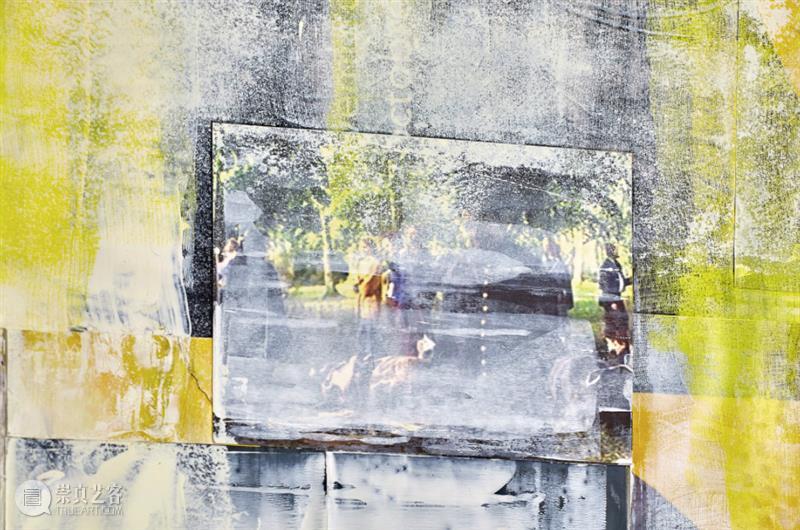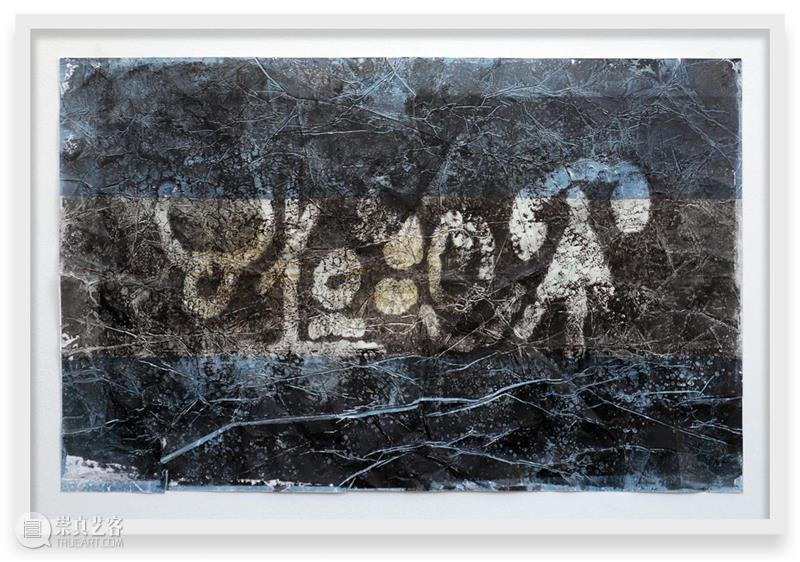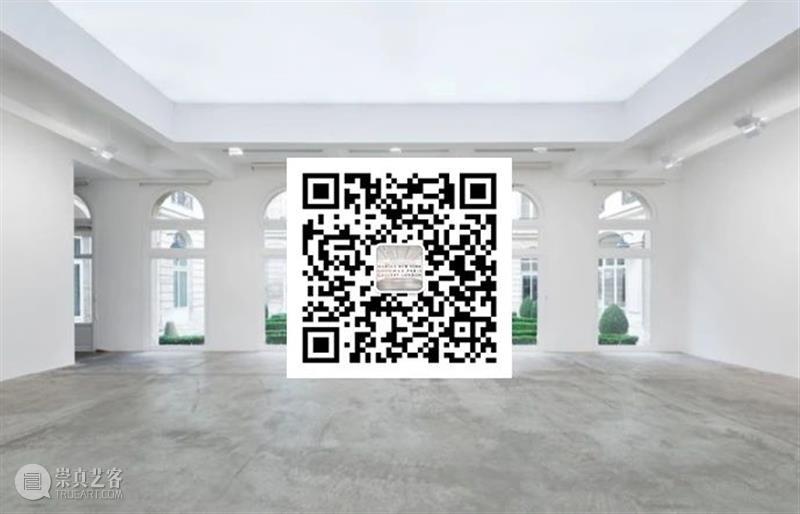MGG现场 | 阿德里安 · 维拉 · 罗哈斯虚构世界终结点的景观,玛丽安 · 古德曼巴黎画廊正在展出
![]() {{newsData.publisher_name}}
{{newsData.update_time}}
浏览:{{newsData.view_count}}
{{newsData.publisher_name}}
{{newsData.update_time}}
浏览:{{newsData.view_count}}
来源 | {{newsData.source}} 作者 | {{newsData.author}}



”2010年,我提出了一个假设:假如,在人类走到尽头的时刻,仍然存活着的人们决定要做一件艺术作品呢?那将会是人类最后的艺术创作,以及由此引发一系列的合理结果。艺术的终点,世界的终点和语言的终点,将会指向同一件事情:同一个终点。在我的虚构中,到达艺术之地即创造一种空无,一种寂静,为我提供了空间去探索非人类的前景。这时我便把一种新的有关外星人的隐喻置入这最终的景观中。我所谓的‘外星人的视角’表达了这种不可能的矛盾:一种没有文化的主观性。”
阿德里安 · 维拉 · 罗哈斯 / “想象的终结”展览现场,玛丽安 · 古德曼巴黎画廊&玛丽安 · 古德曼书店,2020玛丽安 · 古德曼巴黎画廊非常荣幸举办阿德里安 · 维拉 · 罗哈斯(Adrián Villar Rojas)首场大型个展。这或许是巴黎空间自成立以来最为壮观的展览之一,不仅将所有的展厅纳入一个整体的构想,并且唤醒了该建筑过去作为居住空间的历史。封城期间,艺术家观看并记录了数千小时的监视摄像头视频,由此引发他对人类想象的本质进行探索。这些在网上公开的影像五花八门,从被隔离的动物园笼中的猩猩到水下藻类,以及美国宇航局的卫星图片信息。在“想象的终结”(La fin de l'imagination)中,维拉 · 罗哈斯提出疑问:新冠病毒如何影响我们的时代——包括我们的时间概念、语言和表现体系?如果意义是由我们的想象力所创造,那么一个时钟或日历的虚构性并不亚于杰克逊 · 波洛克(Jackson Pollock)的绘画。时钟和波洛克的作品都是主观的。然而,有一个决定性因素支撑着所有虚构,那就是:权力。1793年的法国革命力量并不足以将拿破仑新发明的十进制历法推广到全世界,而这一历法在法国也仅存活了12年;而二战后美国的财富和影响力,无疑足够将抽象表现主义载入当代艺术的史册。维拉 · 罗哈斯在此想象的世界,与前述属于过往的构建相呼应。他在巴黎空间中引入时钟和日历等元素,如同老宅中挥之不去的属于往昔的幽灵。阿德里安 · 维拉 · 罗哈斯 / “想象的终结”展览现场,玛丽安 · 古德曼巴黎画廊&玛丽安 · 古德曼书店,2020阿德里安 · 维拉 · 罗哈斯 / “想象的终结”展览现场,玛丽安 · 古德曼巴黎画廊&玛丽安 · 古德曼书店,2020阿德里安 · 维拉 · 罗哈斯 / “想象的终结”展览现场,玛丽安 · 古德曼巴黎画廊&玛丽安 · 古德曼书店,2020
从上世纪90年代末到本世纪头几年间的那个前互联网时代,在阿根廷的罗萨里奥,维拉 · 罗哈斯那一代艺术学生既借不到也买不起价格昂贵的艺术类书籍,只能依靠由影印件集成的册子去接触西方艺术巨匠。这些影印件通常是对原版书复印本的二次复印,信息因而在一次又一次的复制中不断缺失。罗斯科、波洛克等人的画作,以颗粒粗糙的黑白影印件呈现,构成对作品本身的一种不可预知的颠覆,也在这些学生中引发一场关于主观性的无声革命。国立罗萨里奥大学美术学院教授的“艺术史”,本是极少包含拉美叙事的“西方艺术史”。如此以来,这一学科变成了缺失的视觉遗产残存的痕迹,勉强可辨;而年轻学生们的想象力由此找到了孕育突变的沃土,并且他们的自由发挥更多是基于幻想而非信息。维拉 · 罗哈斯描述道:“这些影印本仿佛在呐喊:没有确凿的事实,只有虚构和臆想!艺术史,或者说艺术故事,对我们学生来说是要被质疑和盗用的”。阿德里安 · 维拉 · 罗哈斯 / “想象的终结”展览现场,玛丽安 · 古德曼巴黎画廊&玛丽安 · 古德曼书店,2020
阿德里安 · 维拉 · 罗哈斯 / “想象的终结”展览现场,玛丽安 · 古德曼巴黎画廊&玛丽安 · 古德曼书店,2020
在这次个展中,维拉 · 罗哈斯充满颠覆性的想象力体现在画廊负一层空间中的一组场域特定墙面作品。叠加的画面源自他自己长久保存的那些影印本,并印在了画廊过去的海报、邀请卡和信封上。这些载体本身便具有档案意义,代表了玛丽安 · 古德曼巴黎画廊25年来积累下的印刷物历史。在这里,资本纪(Capitalocene)的艺术遗产留下的图像层层叠加,似乎展现出一种新型视觉基因代码,而它源自一个来自阿根廷罗萨里奥的年轻人独特的艺术教育背景。历史学家阿兰 · 鲁基(Alain Rouquie)曾将阿根廷所在的一大片区域称为远西(Far West)。
阿德里安 · 维拉 · 罗哈斯 / 《来自“想象的终结”系列(XXXI)》,2020 / 彩色墨粉,稀释剂,水性合成漆,玛丽安 · 古德曼画廊过去的海报、卡片、信封 / 300 x 692cm

阿德里安 · 维拉 · 罗哈斯 / 《来自“想象的终结”系列(XXXI)》局部,2020 / 彩色墨粉,稀释剂,水性合成漆,玛丽安 · 古德曼画廊过去的海报、卡片、信封 / 300 x 692cm
然而,人类究竟正处于绝境危机还是光速革命的时代?或许,正如量子力学所述,人类发现自身正同时处于以上两个进程中。因此,“想象的终结”也可以被视为新的充满颠覆性想象的可能,并同时拥有属于自己的革命性规则。在这一思路下,维拉 · 罗哈斯提出了一种虚构的泛人类突变语言,不论在一千年后或明日或许皆可使用。这个标识制作体系聚集了各类形状,与当前和过去人类的书写机制有着不同程度的关联。2019年,艺术家在为阿姆斯特丹Oude Kerk(当地最古老的教堂)个展 “献给地球人的诗”制作配套漫画时,首次运用了这一图形体系。如今它来到巴黎,并像戈达尔的电影《中国姑娘》(La Chinoise)一样,萌发变异成一股“友好”的破坏力量,以成为“想象的终结”生态系统中的核心元素。阿德里安 · 维拉 · 罗哈斯 / “想象的终结”展览现场,玛丽安 · 古德曼巴黎画廊&玛丽安 · 古德曼书店,2020“想象的终结”还包括在玛丽安 · 古德曼书店举办的纸上作品展。艺术家选择了自己2003年到2020年的12场个展的海报,加以折叠和揉搓,用彩色颜料覆盖或提亮,并加入类似人类印记的痕迹成为画面重点。在艺术家的叙述中,它们象征了政治宣传的海报或是未来战争中遗存下的旗帜。

阿德里安 · 维拉 · 罗哈斯 / 《来自“想象的终结”系列(V)》,2020 / 彩色墨粉,稀释剂,水溶性丝网印刷油墨,激光彩色打印 / 作品:59.8 x 92.5cm,装框:71.8 x 104.5cm
阿德里安 · 维拉 · 罗哈斯 / 《来自“想象的终结”系列(XIX)》,2020 / 水性合成漆,激光彩色打印 / 作品:60 x 84.9cm
维拉 · 罗哈斯通过不同媒介建立的艺术实践,营造出一种沉浸式环境和体验,让人仿佛身处永恒的时空旅行状态。这些年来,维拉 · 罗哈斯的创作以测绘学为基础,逐渐发展成一个个在变化中的系统,结合了有机和无机的世界。他把脑中的想象转化成不可预知的微观环境,并邀请观众在其中探索。在他创造的这样一种世界中,未来、过去和以不同面貌呈现的现在,三者之间相互作用,如同一个不断变化的整体。通过构建这样的世界,维拉 · 罗哈斯也提出了一个问题:如果我们能以外星人的视角来审视和思考人类自身,用一种抽离的态度,不带成见也没有道德审判,那会是什么样?人类走到今天,如果我们能从旁观者的视角看待自身呢?
阿德里安 · 维拉 · 罗哈斯,摄于希腊,2017 / © 帕诺斯 · 科克尼阿斯(Panos Kokkinias)
阿德里安 · 维拉 · 罗哈斯1980年出生于阿根廷罗萨里奥市,过着游牧式的生活。他已举办多场个展,其中包括:“献给地球人的诗”,阿姆斯特丹老教堂(2019);“有时你会想,在一个相互连接的宇宙中, 谁在梦到谁?”,上海油罐艺术中心;“消失剧场”,洛杉矶当代艺术博物馆格芬当代馆(2017),雅典NEON 基金会/雅典国家天文台(2017),奥地利布雷根茨美术馆(2017),纽约大都会艺术博物馆(2017);“Rinascimento”(文艺复兴,2015),桑德莱托 · 雷 · 莱鲍登戈基金会(Fondazione Sandretto Re Rebaudengo);“幻想狂想曲”(Fantasma,2015),斯德哥尔摩现代美术馆(Moderna Museet);“今天我们重启这个星球”(Today We Reboot The Planet,2013), 伦敦蛇形画廊;《La Inocencia de los Animales》(动物无罪,2013),纽约现代艺术博物馆PS1馆(MoMA PS1)。艺术家曾参加以下国际群展:第12届光州双年展,韩国(2018),第14届伊斯坦布尔双年展,土耳其(2015),哈瓦那双年展,古巴(2015),沙迦双年展,阿联酋凯勒巴(2015),2012年新当代艺术博物馆三年展(2012),2012年卡塞尔文献展,第54届国际艺术展威尼斯双年展,阿根廷馆(2011)。https://app.artsvp.co/dacae8
16 September – 31 October 2020"In 2010, I proposed a hypothesis: What if, in the final moments of humanity, the last of the species decided they wanted to make an artwork? It would be the last human artwork, together with all the logical implications unfolded by this fact. The end of art, end of the world and end of language are then one and the same thing: the same end. In my fabulations, reaching the shores of art created a vacuum, a silence that gave space for me to explore nonhuman perspectives. This is when I placed a new metaphor of an alien into this terminal landscape. What I call the ‘alien gaze’ expresses this impossible paradox: a subjectivity without culture."Galerie Marian Goodman is pleased to announce its first major exhibition by Adrián Villar Rojas. It is perhaps one of the most comprehensive interventions in the history of the gallery in Paris, encompassing and connecting each of its rooms, and invoking the past essence of the building as a former domestic environment. The artist’s speculative inquiry on the nature of the human imagination emerged from time spent during the lockdown watching and recording thousands of hours of publicly available CCTV streams online, from caged orangutans in quarantined zoos to underwater algae and feeds from NASA satellites. In La fin de l’imagination, Villar Rojas asks how COVID-19 is affecting time—our human time, our language, our systems of representation. For example, if meaning is created by our imagination, a clock or a calendar is no less fantasious than a Jackson Pollock painting. Clocks and Pollocks are equally subjective. But, all fabulations are supported by a decisive element: power. The power of revolutionary France in 1793 was not enough to implement Napoléon’s newly invented decimal calendar worldwide, it survived a mere 12 years in France, but the wealth and influence of the United States after World War II was certainly enough to position Abstract Expressionism in the contemporary art canon. Through Villar Rojas’ world-building, echoes of these constructs, the clock and the calendar, return to Paris like ghosts in a haunted house. At the end of the 1990s and early 2000s, with the Internet yet to come and books impossible to borrow or too expensive to buy, Villar Rojas’ generation of arts students in Rosario, Argentina, depended on booklets (cuadernillos) comprised of photocopies usually taken not from the original source (i.e., books), but other copies, always losing more information from one to the next series of copies. The distorted grainy, black and white reproductions of such artists as Rothko and Pollock were an unpredictable subversion of the “subject matter” and a silent revolution in those students’ subjectivity. Thus, the teaching of “Art History” in the School of Fine Arts at the National University of Rosario, which in fact is Western Art History that rarely includes Latin American narratives, is turned into the barely decipherable remains of a lost visual heritage where the imagination of those young students found a fertile ground to breed their own mutants, made more of fantasy than of information: “It was almost like these photocopies were shouting: there are no hard facts, only fabulation and speculation!” says Villar Rojas. “Art Histories, or rather Art Stories, are for us students to reclaim and hack”. New disrupting imaginations become evident in the lower gallery, where Villar Rojas introduces a sequence of site-specific murals transposing reproductions of pages from his own preserved booklets of photocopies onto an archive of posters, invitation cards and envelopes that embody a physical history of printed matter produced over Galerie Marian Goodman’s 25-year history. Here, different juxtaposed layers of Capitalocene artistic heritage seem to expose a new visual genetic code resulting from the infinitely singular story of the art education of an individual coming from Rosario, Argentina, a country inscribed in a region that historian Alain Rouquie calls the Far West.But, is humanity in a terminal crisis or in an era of light-speed revolutions? Perhaps, as in quantum mechanics, humanity now finds itself in both processes at the same time. La fin de l’imagination can thus also be the possibility of new disrupting imaginations with its own revolutionary conventions. In this spirit, Villar Rojas proposes a fabulative mutant panhuman language that may be used in a thousand years' time, or tomorrow. This mark-making system gathers various forms with different levels of association to current and past human writing mechanisms. First appearing for a comic-publication accompanying Villar Rojas’ solo show Poems for Earthlings at the Oude Kerk (Amsterdam, 2019), this former graphic apparatus migrates to Paris and sprouts and mutates into a friendly vandalizing force, like Godard’s La Chinoise, to become a central element of La fin de l’imagination ecosystem. La fin de l’imagination also encompasses an exhibition of works on paper at Librairie Marian Goodman. Created using 12 designs of his own past exhibition posters from 2003 to 2020, the posters have been folded, creased, covered or enhanced with coloured pigments. They are predominantly intervened by panhuman stencils, transforming—in the artist’s own narration—into political propaganda or battle flags recovered from futuristic wars. Adrián Villar Rojas has built a practice working across media to create immersive environments and experiences that seem to be in a state of perpetual space-time travel. Evolving over years towards the development of topography-based, mutant, organic-inorganic systems, Villar Rojas invites viewers to become explorers of an unpredictable microcosmos of his design, where the future, past, and alternate versions of our own present interact as a constantly changing totality. By way of this world building, Villar Rojas posits the question: what if we could see and think of ourselves—humanity—from an alien perspective; detached, unprejudiced, even amoral? What if we could see and think of ourselves from the border of our own completed path?Adrián Villar Rojas was born in Rosario, Argentina, in 1980. He lives and works nomadically. Solo exhibitions include Poems for Earthlings, Oude Kerk, Amsterdam (2019); Sometimes you wonder, in an interconnected universe, who is dreaming who?, Tank Shanghai, China (2019); The Theater of Disappearance, The Geffen Contemporary at MOCA, Los Angeles (2017); NEON Foundation at Athens National Observatory, Greece (2017); Kunsthaus Bregenz, Austria (2017), The Metropolitan Museum of Art, New York (2017); Rinascimento, Fondazione Sandretto Re Rebaudengo, Torino (2015); Fantasma, Moderna Museet, Stockholm (2015); Today We Reboot the Planet, Serpentine Sackler Gallery, London (2013); and La inocencia de los animales, MoMA PS1, New York (2013). Participation in international group exhibitions include 12th Gwangju Art Biennale, South Korea (2018); 14th Istanbul Biennial, Turkey (2015); 12ª Bienal de La Habana, Cuba (2015); Sharjah Biennial 12, Kalba (2015); The 2012 New Museum Triennial (2012) ; dOCUMENTA (13), Kassel and Kabul (2012); and 54th International Art Exhibition: La Biennale di Venezia, Argentina’s National Pavilion, Venice (2011).
Appointments are not required for visits, but are available for guided tours.
https://app.artsvp.co/dacae8
正 在 展 出 I CURRENT EXHIBITIONS 11 SEPTEMBER – 24 OCTOBER 2020
PLEASE USE THIS LINK TO MAKE AN APPOINTMENT:https://app.artsvp.co/769338
newyork@mariangoodman.comMonday - Saturday, 10 am – 6 pm
16 SEPTEMBER – 31 OCTOBER 2020
Tuesday - Saturday, 11 am - 7 pm
8 SEPTEMBER - 24 OCTOBER 2020
PLEASE USE THIS LINK TO MAKE AN APPOINTMENT:https://app.artsvp.co/007f30Tuesday - Saturday, 10 am – 6 pm
长按并识别二维码,关注画廊最新动态
如需转载图文,需注明出处
点击阅读原文,进入画廊官方网站

WeChat:MarianGoodmanGallery
Website:http://mariangoodman.com
Facebook:Marian Goodman Gallery
Instagram:mariangoodmangallery
{{flexible[0].text}}

 {{newsData.good_count}}
{{newsData.good_count}}

 {{newsData.transfer_count}}
{{newsData.transfer_count}}


























 分享
分享